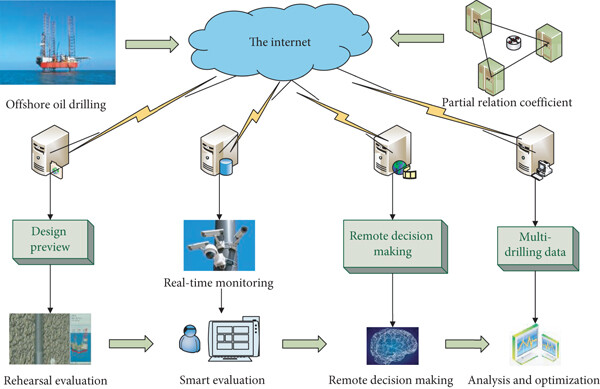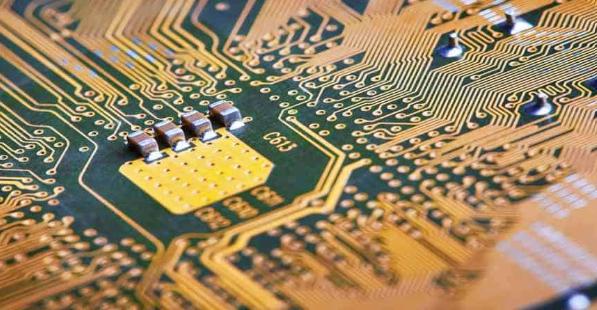In the fast-evolving world of oil and gas, the future of PCBs for oil rig monitoring is shaping up to be a game-changer. With harsh environments, high stakes, and the need for real-time data, printed circuit boards (PCBs) are at the heart of ensuring safety, efficiency, and reliability on oil rigs. So, what’s next for these critical components? The future lies in advanced PCB technology, miniaturization, flexible designs, and high-density interconnects, all tailored to meet the unique demands of the industry.
In this blog, we’ll dive deep into the trends and innovations driving the future of PCBs in oil rig monitoring. From cutting-edge materials to compact designs, we’ll explore how these advancements are transforming the oil and gas sector. Let’s get started with a closer look at why PCBs are so vital for oil rigs and what lies ahead.
Why PCBs Are Essential for Oil Rig Monitoring
Oil rigs operate in some of the toughest conditions on Earth—think extreme temperatures, high humidity, corrosive saltwater, and constant vibrations. Monitoring systems on these rigs track everything from pressure and temperature to equipment health and environmental conditions. PCBs are the backbone of these systems, enabling sensors, communication devices, and control units to function seamlessly.
Without reliable PCBs, real-time data collection and transmission would be impossible, leading to potential safety hazards and costly downtime. As the oil and gas industry pushes for greater efficiency and sustainability, the demand for advanced PCB technology is only growing. Let’s explore the key trends shaping the future of PCBs for oil rig monitoring.

Trend 1: Advanced PCB Technology for Harsh Environments
The oil and gas industry requires electronics that can withstand extreme conditions. Advanced PCB technology is stepping up to the challenge with materials and designs built for durability. For instance, high-temperature laminates and conformal coatings are now commonly used to protect PCBs from heat and corrosion. These materials can handle temperatures up to 150°C or higher, ensuring consistent performance even in the hottest rig environments.
Additionally, manufacturers are incorporating ruggedized designs with improved thermal management. By using copper layers with higher thermal conductivity, PCBs can dissipate heat more effectively, preventing failures in critical monitoring systems. Signal integrity is also a priority, with designs maintaining low impedance values (often below 50 ohms) to ensure accurate data transmission over long distances on the rig.
These advancements mean that oil rig monitoring systems can operate reliably for longer periods, reducing maintenance costs and improving safety. As technology continues to evolve, we expect even more robust materials and designs to emerge, tailored specifically for offshore and onshore oil operations.
Trend 2: Miniaturization of PCBs for Compact Monitoring Systems
Space is often limited on oil rigs, where every square inch counts. This is where miniaturization of PCBs comes into play. Smaller, lighter circuit boards allow for compact monitoring devices that can be installed in tight spaces without sacrificing functionality. The push for miniaturization in PCBs is driven by the need for portable and integrated systems that still deliver high performance.
For example, modern miniaturized PCBs can support complex sensor arrays on a board as small as 2 x 2 inches. These tiny boards often feature multi-layer designs with up to 12 layers, packing more components into less space. This allows for real-time monitoring of multiple parameters—such as pressure, flow rate, and temperature—using a single, small device.
Miniaturization also reduces power consumption, which is critical for remote oil rigs relying on limited energy sources. As components shrink, power requirements drop, often to below 1 watt per device, extending the lifespan of battery-powered monitoring systems. The future of PCBs for oil rigs will likely see even smaller designs as microelectronics and nanotechnology continue to advance.
Trend 3: Flexible PCBs in Oil and Gas Applications
Flexible PCBs are gaining traction in the oil and gas industry due to their ability to adapt to unique shapes and spaces. Unlike traditional rigid boards, flexible PCBs can bend and fold, making them ideal for monitoring equipment that requires non-standard configurations. This flexibility is especially useful in oil rig setups where equipment is often irregularly shaped or subject to constant movement.
These boards are made from materials like polyimide, which not only allow bending but also offer resistance to high temperatures and chemicals. Flexible PCBs can maintain signal speeds of up to 5 Gbps, ensuring that data from sensors reaches control systems without delay. This is crucial for real-time monitoring of dynamic conditions like pipe pressure or structural vibrations on a rig.
In the future, we expect flexible PCBs in oil and gas to become even more prevalent as wearable monitoring devices and embedded sensors grow in popularity. Imagine a flexible PCB integrated into a worker’s safety gear, continuously monitoring environmental hazards. This innovation could redefine safety standards on oil rigs, making operations smoother and more secure.
Trend 4: High-Density Interconnect (HDI) PCBs for Enhanced Performance
High-density interconnect (HDI) PCBs are revolutionizing oil rig monitoring by packing more functionality into smaller spaces. HDI technology uses finer traces, smaller vias, and denser layouts to support complex circuits on compact boards. This is a perfect fit for oil rigs, where monitoring systems need to process large amounts of data without taking up too much room.
For instance, HDI PCBs can feature trace widths as narrow as 3 mils (0.003 inches) and via diameters below 6 mils, allowing for intricate designs. This density enables a single board to handle multiple sensors, communication modules, and power management systems simultaneously. The result is faster data processing and improved reliability, with signal integrity maintained at high frequencies (up to 10 GHz in some cases).
HDI PCBs also reduce the risk of signal interference, a common issue in the noisy electromagnetic environment of an oil rig. As the demand for real-time analytics and IoT integration grows, high-density interconnect PCBs will play a central role in the future of oil rig monitoring, ensuring that systems remain efficient and responsive.

Trend 5: IoT Integration and Smart Monitoring with PCBs
The Internet of Things (IoT) is transforming oil rig operations, and PCBs are at the core of this digital revolution. IoT-enabled monitoring systems use connected sensors to collect and transmit data in real time, allowing operators to make informed decisions instantly. PCBs designed for IoT applications are becoming more sophisticated, supporting wireless communication protocols like Wi-Fi, Bluetooth, and 5G.
These smart PCBs can handle data rates of up to 1 Gbps, ensuring seamless connectivity even in remote offshore locations. They also incorporate low-power designs to conserve energy, often operating at voltages as low as 1.8V. This is essential for rigs where power supply can be inconsistent or limited.
In the coming years, IoT integration will likely drive the development of even smarter PCBs for oil rig monitoring. Predictive maintenance, powered by AI and machine learning, could become standard, with PCBs processing data locally to detect equipment failures before they happen. This proactive approach will save time, reduce costs, and enhance safety across the industry.
Trend 6: Sustainability and Eco-Friendly PCB Manufacturing
As the oil and gas industry faces pressure to reduce its environmental impact, sustainability is becoming a key focus in PCB manufacturing. Eco-friendly materials, such as halogen-free laminates and lead-free solder, are now being used to create greener PCBs for oil rig monitoring systems. These materials minimize harmful emissions during production and disposal, aligning with global environmental standards.
Additionally, recycling initiatives are on the rise. With the global PCB e-scrap recycling market projected to grow significantly in the coming years, manufacturers are finding ways to recover valuable metals from old boards. This not only reduces waste but also lowers production costs, making sustainable PCBs a win-win for the industry.
The future of PCBs in oil and gas will likely see even greater emphasis on sustainability, with innovations in biodegradable materials and energy-efficient designs. These advancements will help oil rigs meet regulatory requirements while maintaining high performance in monitoring applications.
Challenges in Adopting New PCB Technologies for Oil Rigs
While the future of PCBs for oil rig monitoring looks promising, there are challenges to overcome. Cost is a major concern, as advanced materials and HDI designs can be expensive to implement. For smaller operators, balancing performance with budget constraints can be tricky.
Another challenge is ensuring compatibility between new PCBs and existing rig systems. Upgrading to miniaturized or flexible designs may require significant changes to hardware and software, which can disrupt operations if not managed carefully. Finally, the harsh conditions of oil rigs mean that even the most advanced PCBs must undergo rigorous testing to prove their reliability over time.
Despite these hurdles, the benefits of adopting cutting-edge PCB technology far outweigh the challenges. With careful planning and investment, oil and gas companies can leverage these innovations to stay ahead in a competitive industry.
How These Innovations Benefit the Oil and Gas Industry
The trends and innovations in PCBs for oil rig monitoring bring a host of benefits to the oil and gas sector. First, they enhance safety by providing accurate, real-time data that helps prevent accidents and equipment failures. For example, a miniaturized PCB in a pressure sensor can detect anomalies instantly, alerting operators before a problem escalates.
Second, these advancements improve efficiency. High-density interconnect PCBs enable faster data processing, reducing downtime and optimizing rig performance. Flexible designs also make installation and maintenance easier, saving valuable time on busy rigs.
Finally, the integration of IoT and sustainable practices supports long-term growth. Smart monitoring systems powered by advanced PCBs help companies reduce costs through predictive maintenance, while eco-friendly manufacturing aligns with environmental goals. Together, these benefits position oil and gas companies for success in a rapidly changing world.
Conclusion: The Road Ahead for Oil Rig Monitoring PCBs
The future of PCBs for oil rig monitoring is bright, with trends like advanced PCB technology, miniaturization, flexible designs, and high-density interconnects leading the way. These innovations are not just improving the performance of monitoring systems—they’re transforming the oil and gas industry by enhancing safety, efficiency, and sustainability.
As technology continues to advance, we can expect even more exciting developments in this space. From smarter IoT integration to greener manufacturing processes, PCBs will remain at the forefront of oil rig operations. Staying ahead of these trends will be key for companies looking to thrive in the challenging world of oil and gas.
At ALLPCB, we’re committed to supporting the industry with cutting-edge solutions tailored to the unique needs of oil rig monitoring. Whether you’re exploring miniaturized designs or high-density interconnects, we’re here to help bring your vision to life with reliable, high-quality PCBs.
 ALLPCB
ALLPCB







